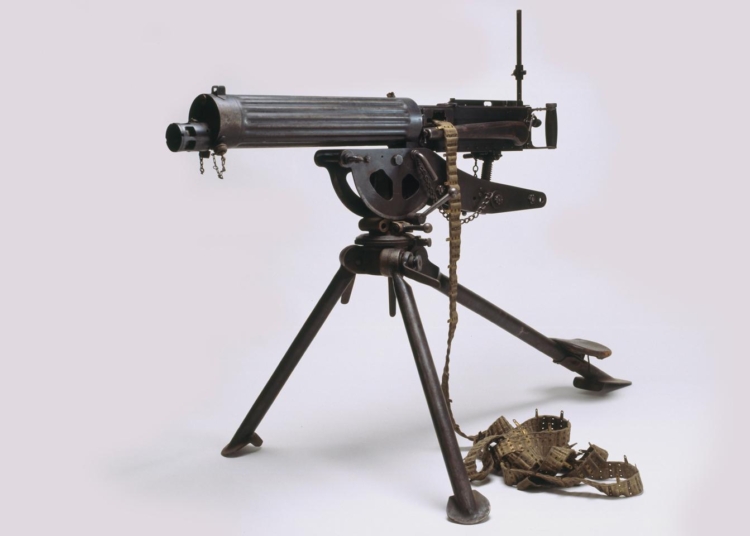The content discusses the impact of modern weapons on World War I, focusing on machine guns, tanks, and poison gas. It highlights how these advancements revolutionized warfare and changed the strategies and outcomes of battles. The introduction of machine guns resulted in high casualty rates and the development of trench warfare. Tanks, despite their early mechanical issues, instilled fear in the enemy and played a decisive role in breaking through enemy lines. The use of poison gas caused panic and terror, inflicting horrific injuries on soldiers. Overall, these advancements set the stage for future conflicts and led to the establishment of the Geneva Protocol to regulate the use of such devastating tactics.
The Impact of Modern Weapons on World War I: Machine Guns, Tanks, and Poison Gas
Introduction
World War I, also known as the Great War, was a conflict that took place from 1914 to 1918 and involved many nations from around the world. This war saw the deployment of various modern weapons that had a profound impact on the strategies and outcomes of the battles fought. Three of the most significant advancements in weaponry during this time were the introduction of machine guns, tanks, and the use of poison gas.
Machine Guns
Machine guns were one of the most devastating weapons introduced during World War I. Unlike previous wars, where soldiers primarily used bolt-action rifles, these newly developed weapons had the ability to fire multiple rounds of ammunition in quick succession.
The widespread use of machine guns fundamentally changed the way battles were fought. With their high rate of fire, they could mow down soldiers charging in open fields, effectively creating a hail of bullets that kept the enemy forces pinned down. This resulted in a significant increase in casualties and stalemates on the Western Front, where both sides entrenched themselves in an attempt to minimize losses.
The introduction of machine guns led to the development of new tactics, such as trench warfare, where soldiers dug trenches as defensive positions. These trenches provided cover from machine gun fire and created a stalemate that lasted for years, as direct frontal assaults became incredibly costly and ineffective.
Tanks
Tanks were another revolutionary addition to the battlefield in World War I. These armored vehicles were designed to traverse difficult terrains, such as trenches and barbed wire, providing infantry support and breaking through enemy lines.
Although early tank designs suffered from mechanical issues and were relatively slow, their psychological impact on the enemy was significant. Tanks instilled fear in the opposing forces due to their ability to withstand small arms fire and demolish obstacles that would typically halt infantry advances.
Tanks played a decisive role in several battles, such as the Battle of Cambrai in 1917, where British forces deployed almost 400 tanks, resulting in a significant breakthrough in German lines. However, tanks alone did not guarantee victory; coordination with infantry and addressing mechanical issues were crucial for their success.
Poison Gas
The use of poison gas was a particularly brutal development during World War I. Both sides employed various types of poisonous gases, including chlorine, phosgene, and mustard gas, with the aim of incapacitating and killing enemy soldiers.
Poison gas attacks caused panic and terror among soldiers. The gases inflicted horrific injuries, causing choking, blindness, burns, and severe long-term health problems. This had a demoralizing effect on the opposing forces and resulted in widespread suffering among both soldiers and civilians.
The use of poison gas led to the development of gas masks, which became essential protective gear for soldiers. However, the psychological impact of the threat of gas attacks remained significant throughout the war and contributed to the ongoing horror and devastation.
Conclusion
The introduction of machine guns, tanks, and poison gas during World War I forever changed the nature of warfare. The high rate of fire of machine guns resulted in massive casualties and entrenched positions, making direct assaults ineffective. Tanks brought a new level of mobility and firepower to the battlefield, breaking through enemy lines and inspiring fear in the enemy forces. The use of poison gas introduced a new level of terror and suffering, leaving a lasting impact on the soldiers and civilians who experienced its effects.
Overall, the advancements in weaponry during World War I revolutionized warfare and set the stage for future conflicts. The devastating consequences of these weapons highlighted the need for international agreements and regulations on the use of such devastating tactics, leading to the establishment of the Geneva Protocol in 1925, which prohibited the use of chemical and biological weapons in warfare.













